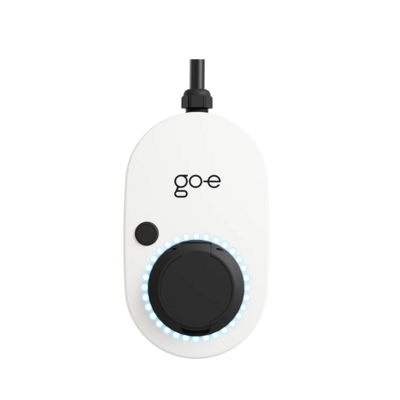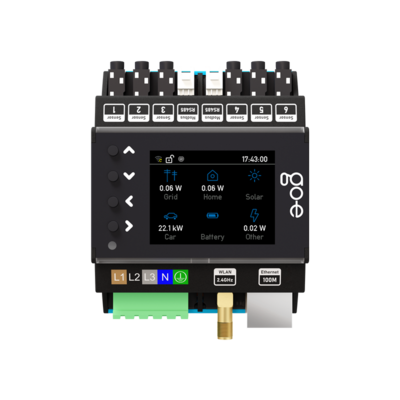Maximise Your Electric Car Efficiency with PV Surplus Charging: A Guide for Smart Energy Utilisation
Last updated:
With a photovoltaic (PV) system in your home, you may find yourself with a bountiful harvest of electricity during the day. But what to do if you have not just enough solar power but more than enough? Rather than selling this surplus energy to the grid at a less than optimal price, you can put it to good use and power your electric vehicle by performing the so-called "PV surplus charging" or "excess PV charging".
This article will explain how PV surplus charging works, what you need to consider, and why it benefits you as an EV owner.
Do you want to allow Integration of youtube videos?
Allows the playback of videos, that are hosted on youtube.com. By allowing this feature, you accept the privacy agreement of google.
What is Photovoltaic Surplus Charging?
Excess photovoltaic charging is the process of directing any unused solar energy generated by a building's PV system directly into the battery of an electric vehicle. This enables you to utilise as much of your own renewable energy as possible for driving.
Note: The prerequisite for surplus charging is to charge your vehicle when the sun is shining and the solar panels are generating electricity. Therefore, if you only charge your car once or twice a week, consider doing it at home when it’s parked in the garage or outdoors and there is plenty of sunlight outside.
This way, you can take full advantage of the excess energy your panels produce and maximise the charging efficiency of your electric vehicle. Imagine you have a hot summer day when the sun is shining bright and not a single cloud covers its light. As a result, your solar panels are generating a massive amount of energy.
On Saturday morning, the dishwasher takes care of your dishes, the boiler runs to provide you with plenty of hot water, and you start the washing machine to get your clothes ready for the next week. However, even so... there is still more solar power available! So that's a brilliant opportunity to top up your electric vehicle battery for free and drive on sunshine the next day.
How can you actually do it?
How does Excess PV Charging Work?
Surplus photovoltaic charging uses green energy generated by a home solar photovoltaic system to power a vehicle. The key components of a PV system include the solar panels themselves and an inverter that work together to generate and convert solar energy.
The goal of surplus charging is to recycle excess energy that would otherwise be sent back to the grid and instead put it to good use by charging an electric car. Of course, you can also sell the excess energy to the grid, but you won't make a fortune doing so. Buying electricity usually costs more than selling it. So, when the days are less sunny, you may find yourself buying energy at a higher price than you sold it for. Not a bargain.
Here's how PV surplus charging works: when your smart EV charger senses the excess energy generated by your solar panels, it springs into action. It starts charging your car, allowing you to take the sun's energy with you on the road. It's basically like having your own solar-powered gas station, but without the exhaust fumes and emissions.
What do I Need for PV Surplus Charging?
First things first, as they say. You need a solid equipment foundation to enjoy the benefits of PV surplus charging. That includes installing solar panels and buying all necessary components to run your household appliances on sun power. Feel free to check our blog post on EV charging with solar to find out more about that.
On the side of the electric car, you'll need a smart wallbox that's capable of PV surplus charging.
Which Wallbox Allows Excess PV Charging?
There is quite a selection of offers on the market. However, many of the wallboxes will cost you an arm and a leg. If you want your charging station to be capable of PV surplus charging and don't want to spend a fortune buying it, our smart go-e Charger combined with the go-e Controller is a great solution. This wallet-friendly combo offers effortless charging with excess solar energy.
go-e Charger Gemini flex 22 kW

The intelligent wallbox can be used both stationary in the wall bracket and mobile. No electrician is required for the installation of the charging station. Charging power from 1.4 kW to 22 kW. 1-phase or 3-phase charging.
go-e Charger Gemini 11 kW

The compact wallbox for stationary use, at home or at the workplace. Simple installation, intuitive operation and smart comfort functions. Charging power from 1.4 kW to 11 kW. 1-phase or 3-phase charging.
go-e Controller

The go-e controller enables you to improve self-consumption from your PV system and ensures with dynamic load balancing that your house connection is not overloaded.
The go-e Controller functions as an Energy Management System (EMS). This makes it a gateway to a world of possibilities. Tech-savvy users can make use of other EMS solutions thanks to the go-e Charger's open API interface. Furthermore, some third-party providers have already integrated our go-e Charger into their own EMSs. Nevertheless, for those who favour simplicity and affordability, the go-e Controller is the absolute winner.
The go-e Controller tracks the amount of surplus solar power available and allows its transfer into your car battery. Meanwhile, the go-e Charger takes care of the actual charging process, topping up your car battery in the safest way possible.
What sets this solution apart is the level of transparency it provides. With the Controller, you can keep an eye on the generation and consumption of PV power for your electric car and some other household appliances with large power consumption. You can access and monitor this information through the app or see it on the go-e Controller display.
This way, you can charge your vehicle with confidence, knowing exactly where your energy is coming from and going to. That’s the power of smart charging!
Do you want to allow Integration of youtube videos?
Allows the playback of videos, that are hosted on youtube.com. By allowing this feature, you accept the privacy agreement of google.
What are the Benefits of PV Surplus Charging?
Alright, let's take a step back and talk about why PV surplus charging is such a win-win.
- Cost saving: By using a solar panel system to even partially charge an electric vehicle, you automatically reduce your use of grid electricity, which is often more expensive than the energy generated by solar panels. This can save you a pretty penny over time, especially if you use your EV on a day-to-day basis.
- Improved energy independence: PV surplus charging allows you to produce your own energy, making you less dependent on the grid. This can be especially important in areas with unreliable or costly grid-based electricity.
- Reduced carbon footprint: Charging your EV using renewable energy sources like solar panels reduces your carbon footprint. Every mile driven on sun power is a step towards a greener future and a more frugal lifestyle. Solar energy does not produce greenhouse gas emissions, unlike grid-based electricity, which predominantly relies on fossil fuels like coal, natural gas, and oil.
When is PV surplus charging beneficial?
Photovoltaic surplus charging is the perfect solution for you in two cases:
-
If the amount of energy produced by your domestic solar PV system is often greater than the energy used by a household.
-
If you frequently drive your electric vehicle and use a significant amount of energy for charging.
Summary
By charging with solar and thus reducing your reliance on grid power, you're not only saving cash in the long run, but you're also doing your part for the environment.
On top of that, you can enjoy the independence and peace of mind from knowing you're using your own solar power to run your home and charge your electric vehicle.
However, if you're considering buying a solar system just to charge your car, you might want to give it a second thought. Before you go all-in, it's important to assess the total electricity consumption in your home. By installing a PV system and making the most of surplus charging, you can not only charge your electric car, but also optimise the use of electricity in the building. It's a smart move that will certainly save you a pretty penny and reduce your carbon footprint.
